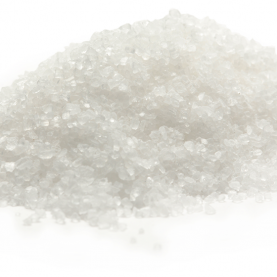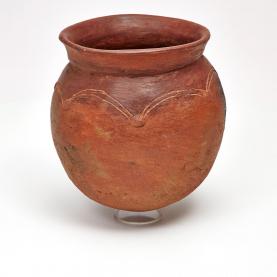Anthropotechnology
During the 1990s, Philippe Geslin further expanded anthropotechnology, a social science research discipline that endeavours to resolve problems raised by the transfer of technologies to an environment for which they were not originally intended.
Boiling brine requires wood as fuel, Guinea, West Africa, 1998 © Xavier Desmier
There have been countless failures in technology transfer, including in the context of food production. Often, such transfers simply involve the implementation of technical systems without taking into account the social or cultural realities of the environment in which they are being implemented. Anthropotechnology aims to analyse the realities and propose sociotechnical benchmarks for the design of these systems1.
A globe-trotting unifier of cultures
Études en Sciences Sociales in Paris culminated in a PhD thesis focusing on social anthropology and ethnology. Since 1990, he has contributed to the development of anthropotechnology through numerous fields of research and projects in Africa, Asia, Latin America and Greenland. By his own definition, this discipline “focuses its actions on the study and improvement of the working and living conditions of populations across the world. It guides those involved in the design stage, making them more attentive to the ‘human factor’, to the social, cultural and environmental elements. It thereby favours the design of techniques which takes into account the people using them, their way of thinking and acting in specific contexts2.”
His first anthropotechnology project took him among the Susu people on the Guinean coast from 1993 to 1997. Here the locals traditionally produce salt by heating brine over stoves fuelled by mangrove wood. This process uses vast quantities of wood, hence a programme sought to halt the deforestation of mangroves by introducing an alternative salt production system, similar to that of the Guérande salt marshes in western France. The ethnologist was involved in the analysis, design and test phases of this technology transfer between the salt marsh workers of Guérande and the Susu people.
Interview
Philippe Geslin, how did you come to work in anthropotechnology?
“As I come from a background of cultural technology and the anthropology of techniques, I was drawn towards anthropotechnology because, in my particular disciplines, we didn’t know how, we didn’t have the time or we didn’t want to develop a methodology for intervention. As an anthropologist specialising in techniques, I wondered what role I could play in the processes behind the design or transfer of technology. Anthropotechnology studies the processes for designing techniques and products. It is a field of applied research which integrates individuals’ ways of thinking and acting into the design processes. Now I teach this discipline in an engineering school (Haute École Arc Ingénierie in Neuchâtel). I enjoy training young people who will one day be in companies and making decisions regarding technology transfer and technological choices.”
What is the typical approach of anthropotechnology?
“Anthropotechnology starts in the field. It is a long and restrictive approach launched by Alain Wisner in the 1960s in France3. However, he was never able to apply it to actual projects. Taking inspiration from his work, we’ve developed methodologies that can be integrated into processes designed to transform a situation and we’ve been applying them in the field for 25 years. We support specific projects in extremely diverse fields, working on the process as a whole. In general, we work in response to requests. Of course we provide technical solutions, but the human being is always at the heart of the approach. It’s a question of contextualising the request, taking user needs into account and thinking about the repercussions of technical choices on their living conditions.”
What sort of applications can anthropotechnology have in the food sector?
“There are many ways it can be used. We can work on food-processing systems, analyse culinary practices for the design of new products or explore, for example, the potential influence of these processes on future technical choices in terms of food preparation: Whether or not a solar oven is suitable for a particular society or how finely food tends to be chopped and the impact this has on the choice of design of a food processor intended for export, etc. We can also work on sensory aspects. Carole Baudin is part of our team. She specialises in sensory anthropology, where it’s used for choosing materials and textures etc. The Susu people, for example, considered solar salt to be saltier than their locally-produced salt. This was a deciding factor in the choice of innovation. We work a lot on representation in technical choices. If we take the example of Susu society again, they have two types of salt, male salt and female salt. Male salt is used for medicinal purposes and is made from hot brine used to produce female salt intended for daily consumption4. By favouring solar salt production rather than heating brine, the Susu made the deliberate choice to abandon the production of male salt and thereby abandon one of the features of their traditional form of salt farming. In societies across the world, taste, touch and sight are shaped by ‘culture’.”
You apply the anthropotechnological approach everywhere in the world. Can you tell us about the project with salt producers in Guinea?
“The project in Guinea was unusual in that it did not originate from the local people, but from French salt producers in Guérande (western France). They wanted to transfer their technique of producing salt in salt marshes to Guinea, to stop mangrove deforestation, while at the same time ensuring this technology met the needs of the local Susu salt producers.
I stayed there for fourteen months. While it’s true that traditional salt farming uses wood, once on the spot I soon realised that producers were in fact very effective in implementing their expertise regarding the management of mangrove wood. They knew how to manage this resource. In fact, there wasn’t any deforestation. The problems lay elsewhere. At that time, the Susu people had other needs. They particularly wanted to improve the harsh working conditions they had to endure to produce salt, such as the high temperatures of the stoves, large numbers of mosquitoes in the mangroves, poor access to water, isolated camps and no school for the children for 4 months etc., and to put technology in place that would at the same time help them protect their paddy fields and, as such, guarantee their rice production.
From the technical point of view, the local clay was different to that of Guérande. It wasn’t impermeable enough and the salt marshes produced salt that was unsuitable for consumption. The creation of salt marshes also came up against a complex land system where not all the producers could benefit from this type of arrangement. Many salt farmers didn’t own the land, but only had a right of use for an undefined length of time, meaning they had no guarantee of being able to stay on the land they were using from one year to the next. This didn’t favour investment in large-scale work to build salt marshes.
The reality in the field was therefore far removed from that of the Guérande salt workers who wanted to implement their style of salt marshes in the Susu region. Technically, economically and socially, it just could not work. My role as an ethnologist was to report back what the Susu producers were looking for and to show the limitations to the exportation of the Guérande salt marsh system when ‘confronted’ with local realities. We then embarked on designing a process together with the future users.”
As an ethnologist, did you also study the role of representation?
“Absolutely. It was important to ask what salt represented for the Susu people. The Susu traditionally produce salt by mixing salty soil with seawater to obtain brine. This is then heated in pans until salt crystals appear. The Susu told me that, from their point of view, the salt produced by the Guérande salt farmers was not salt. It lacked what we in ethnology refer to as a catalyser, meaning that, for the Susu, it lacked the salty earth they believe is essential to make salt. We were going to have to design technology that would enable them to produce salt which was in keeping with their system of representation. That is one of the reasons we abandoned the Guérande system of salt marshes and instead turned towards a system using plastic sheets, and brine produced beforehand from a blend of seawater and salty soil. Quite simply to ensure it worked with the Susu representation system. We know that, whatever the technology or the product being made, if it doesn’t fit in with the representation system in place, it won’t work. Importing technologies, including food technologies, very often fails for reasons that are purely symbolic and representational.”
Was the production of salt on plastic sheets a success?
“Yes it was! This solution turned out to be much better for this population than the Guérande-style salt marshes. Plastic sheets were already used by the Susu, particularly in the rainy season, and they are cheap and so the initial cost is soon paid off. There are no land issues with this system as it’s mobile and so, if necessary, can be set up quickly or moved from one plot of land to another. The sheets are also very easy to use: Brine is poured over them and, thanks to the action of the sun and the wind, salt crystallises in a matter of hours, without needing someone to watch over it. As the women no longer need to stay and watch the stoves heating the salt, they can spend time smoking fish and selling it on markets, while still producing salt at the same time. This means more income for women. Some women have even started to buy land around Coyah to build houses which they rent out.
The men no longer need to cut wood for salt production. They remain in the hamlets to protect the rice growing areas from the rise of salt water. Rice production has increased considerably and the hamlet of Wondewolia where we worked has grown from around one hundred inhabitants in 1991 to five hundred inhabitants today!
This new technology has also benefited the children. With the old method of salt production, the whole family would leave to live on the salt production camps for four or five months. Now that salt production requires less labour, only the women go to the production sites. The children stay behind in the village with their fathers. Staying in the village means having access to school, enabling children to be schooled for longer. In the end, this small plastic sheet has had unbelievable repercussions!”































